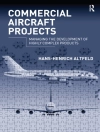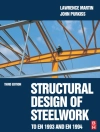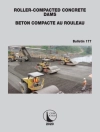The latest achievements of earthquake prediction via radio communication systems, by the world’s leading authority
Prof. Hayakawa is one of the world leaders in the field of seismo-electromagnetics for EQ prediction and this area of research is still evolving
Presents the fundamentals of radio communications and radio propagation, using the radio noises and propagation anomalies as a precursor of earthquakes
Considers the combination of different kinds of seismogenic electromagnetic signals of both natural and artificial character
Timely topic following the recent sequence of highly destructive earthquakes around the world
विषयसूची
Preface ix
1 Earthquakes and EQ Prediction 1
1.1 Fundamentals of Earthquakes 1
1.1.1 Naturally Occurring EQs 3
1.1.2 EQ Fault Types 3
1.1.3 EQs Away from Plate Boundaries (Interplate EQs) 4
1.1.4 Shallow-Focus and Deep-Focus EQs 5
1.1.5 Frequency of EQ Occurrence 5
1.2 Conventional EQ Prediction by Seismic Measurements 5
1.2.1 Historical Background 5
1.2.2 Measurement of EQs and Crustal Movement 8
1.2.3 Long-Term, Medium-Term, and Short-Term EQ Prediction 9
1.3 Nonconventional (Nonseismic) EQ Prediction with Radio Technique 10
1.3.1 Historical Introduction of EQ Prediction 10
1.3.2 Nonseismic (Mainly Electromagnetic) Short-Term Precursors 12
References 16
2 Radio Communication and Radio Noise 19
2.1 Communication Systems 19
2.1.1 General Scheme of Communication and Communication Systems 19
2.1.2 General Scheme of Communication Systems 19
2.1.3 General Scheme of Communication Media 21
2.2 Propagating Media of Radio Communications 22
2.2.1 Radio Propagation Types 22
2.2.2 Radio Signal Transmission and Propagation Characteristics 23
2.3 Major Radio Propagation Types (General Characteristics) 24
2.3.1 Ground Wave Propagation 24
2.3.2 Tropospheric Propagation 29
2.3.3 Ionospheric Propagation/Earth–Space Propagation 33
2.4 Radio Noise 36
References 39
3 DC/ULF Technique 41
3.1 Historical Introduction 41
3.2 DC Geoelectric Signals 43
3.2.1 VAN Observational Method 43
3.2.2 Selectivity Law: How to Estimate the EQ Epicenter 46
3.2.3 VAN Relationships: How to Estimate the EQ Magnitude 47
3.2.4 Variety of SES: How to Estimate the Time of a Coming EQ 47
3.2.5 Results of EQ Prediction Using VAN Method 48
3.2.6 Discussion 48
3.3 ULF Electromagnetic Emissions 52
3.3.1 Introduction 52
3.3.2 Three Major ULF Events 52
3.3.3 Correlation between ULF Emissions and EQs 54
3.3.4 Existing ULF Networks in Japan 55
3.3.5 Analysis Methods of ULF Magnetic Field Variations 58
3.3.6 Characteristics of Seismogenic ULF Emissions and Current Activities 63
3.4 Generation Mechanism of DC/ULF Emissions 64
3.4.1 Microfracturing Mechanism 64
3.4.2 Induction Mechanism 66
3.4.3 Electrokinetic Mechanism 68
3.5 ULF Magnetic Field Depression 74
3.5.1 ULF Magnetic Field Depression as a New Phenomenon 74
3.5.2 An Example for the 2011 Japan EQ 75
3.5.3 Generation Mechanism of ULF Magnetic Field Depression 79
References 81
4 ELF Techniques 87
4.1 Characteristics of Extremely Low-Frequency Waves 87
4.2 Theoretical Aspects of Propagation on VLF/ELF 87
4.2.1 Rays and Modes 87
4.2.2 Fresnel Reflection 91
4.3 Propagation of ELF Waves 93
4.4 Seismogenic ELF Electromagnetic Emissions 95
4.4.1 ELF Sensors and Selection of Frequency 95
4.4.2 Some Examples 99
4.4.3 Statistical Results 100
4.4.4 Generation Mechanism of Seismogenic ELF Emissions 101
4.5 Anomalies in SRs 101
4.5.1 An Event Study: 1999 Taiwan Chi-chi EQ 102
4.5.2 Statistical Results 120
4.6 ULF/ELF Electromagnetic Radiation before the March 11, 2011, Japanese EQ 125
4.6.1 ULF/ELF Precursor 126
References 135
5 VLF/LF Techniques 139
5.1 Characteristics of ELF/VLF/LF Waves 139
5.2 Whistlers 140
5.2.1 Sources and Propagation 140
5.2.2 Refractive Index 141
5.2.3 Dispersion 141
5.2.4 Allied Phenomena 141
5.3 Theoretical Aspects of Propagation on VLF/ELF 142
5.3.1 Effect of the Earth’s Magnetic Field 142
5.3.2 Effects of Earth–Ionosphere Curvature 144
5.3.3 The Use of VLF/LF Subionospheric Propagation as a New Methodology 144
5.4 Anomalies of Subionospheric VLF/LF Propagation and Lower Ionospheric Perturbations in Possible Association with EQs 145
5.4.1 History of VLF/LF Subionospheric Method 145
5.4.2 Japanese VLF/LF Network 147
5.4.3 Short-Distance Propagation and VLF/LF Propagation Anomalies 150
5.4.4 Long-Distance Propagation and Lower Ionospheric Perturbations 171
5.5 Seismogenic VLF/LF Emissions 175
5.6 Anomalous Propagation of Whistlers 179
5.6.1 Whistler Data Used in This Paper 179
5.6.2 Anomalous Whistlers and Seismic Activity 180
5.7 Generation Mechanism of Seismo-ionospheric Perturbations 189
References 192
6 MF Techniques 199
6.1 Characteristics of MF Waves 199
6.2 Anomalies of MF Broadcasting Signals and Ionospheric and Atmospheric Perturbations 199
6.2.1 LF Radio Precursors 199
6.2.2 Propagation Characteristics of LF Anomalies and Discussion 202
6.2.3 Conclusion of LF Radio Waves 206
References 207
7 HF/VHF/SHF Techniques 209
7.1 Uses of HF/VHF/SHF Waves 209
7.1.1 Instrument and Analysis 210
7.1.2 Ionosonde fo F2 210
7.1.3 GPS TEC 211
7.1.4 Doppler Shift 211
7.2 HF/VHF Bottomside Sounding and Ionospheric Perturbations 212
7.2.1 Seismo-ionospheric F-Region Precursor 212
7.3 Over-the-Horizon VHF Propagation and Atmospheric Perturbation 225
7.3.1 Characteristics of Over-the-Horizon VHF Propagation in Possible Association with EQs 225
7.3.2 Interferometric VHF Direction Finding 236
7.4 Line-of-Sight VHF Propagation 245
7.4.1 Wideband Measurement System 245
7.4.2 Statistical Analysis and Discrimination of Anomalous Data 247
7.4.3 Observation Results 248
7.4.4 Conclusion 250
References 250
8 Satellite Observations 255
8.1 Historical Introduction of Satellite Observations 255
8.2 Plasma Anomalies and Plasma Turbulence (Early Results) 256
8.2.1 Ion and Electron Density and Temperature 256
8.2.2 Energetic Particles 256
8.2.3 Infrared and Thermal Measurements 258
8.3 Radio Emissions in Different Frequency Ranges (Early Results) 259
8.3.1 Plasma Waves 259
8.4 The DEMETER Satellite and Observational Results 264
8.4.1 Scientific Payload 265
8.4.2 Operations and Data Processing 266
8.4.3 Scientific Results from DEMETER 267
References 280
9 Summary and Conclusion 287
9.1 Summary of the Use of Radio Techniques in EQ Prediction 287
9.2 Future Directions 288
References 290
Index 291
लेखक के बारे में
Masashi Hayakawa
University of Electro-Communications, Japan












